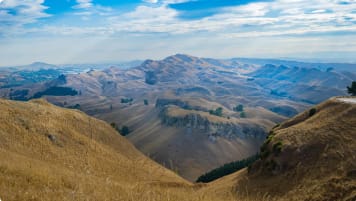Stewart Island, New Zealand
Explore on a small group walking tour of New Zealand for active mature or senior travellers Stewart island. Suitable for couples or solo travellers who enjoy hiking/walking tours.
20 May 20 · 5 mins read

Stewart Island, New Zealand
Most travellers to New Zealand stick to the highlights of the North Island and the South Island – Wellington city, Christchurch, Tongariro Crossing and Franz Josef Glacier. But get off the beaten track and head to New Zealand’s ‘third island’, Stewart Island, to discover a natural wonderland that equals any on the main two islands.
Stewart Island/Rakiura is the third-largest island in the archipelago of New Zealand. It is located around 30 kilometres to the south of the South Island, across the Foveaux Strait, and is around 1, 746 square kilometres in size.

Stewart Island’s location – at 47 degrees south – puts it in the path of the icy, howling winds of the ‘roaring forties’. Because of this harsh climate, it has largely avoided human development. The island played an important role in Maori mythology, as indicated by its original Maori name: Te Punga o Te Waka a Maui, or ‘The Anchor Stone of Maui’s Canoe’: referring to the part the island plays in the legend of Maui and his crew, who from their canoe (the South Island) caught and raised the great fish (the North Island).
However, Maori New Zealanders more commonly use the name Rakiura, translating as the ‘blushing of Te Rakitamau’, an early Maori chief whose proposal of marriage was rejected by two young women from Stewart Island. Rakitamau’s blush is reflected in the glowing sunsets and sunrises of the island. The island had a small Maori population until European settlement.
The first Europeans to reach the island was Captain James Cook and the Endeavor in 1770. Indications are that Cook knew that the landmass was an island, but chose to hide in this in his maps, charting Stewart Island as a peninsula from the South Island – for fears that, in the context of intense Anglo-French rivalry between the Seven Years War and the Revolutionary/Napoleonic Wars – the French may use the island as a launching point for invasions of a (then hypothetical) British settlement on New Zealand.
The strait was first charted by Owen Fulgar Smith, an American who had been living in Sydney, in 1806. The island received its name from William Stewart, first officer on the Pegasus, which visited the island in 1809.
In the early 19th century explorers, miners, missionaries and settlers came to Stewart Island from the United Kingdom, many of which intermarried with Maori women, creating a culture that was strongly entwined with the original Maori culture of the island. The cultural tapestry of Stewart Island was enhanced with a population of Norwegian whalers and settlers in the 1920s, many of whom permanently remained on the island.
However, the population has consistently remained small. Today, the island has a population of only 390 people, located in the town of Oban on Halfmoon Bay. The result is that the island has barely been touched by human settlement. Over 85% of the island is preserved as a National Park. Stewart Island has only 28 kilometres of road, but over 280 km of walking tracks, suited for a range of abilities.
In particular, Stewart Island is home to a population of brown kiwi or tokoeka, which outnumber humans on the island. Though kiwis can be seen on the other two major islands, only on Stewart Island can they be seen by daylight – as in other parts of New Zealand, kiwis have adapted to be nocturnal to avoid predators.

Stewart Island is also home to a significant population of blue penguins and rare yellow-eyed penguins, which waddle around the rocks.
Off shore Ulva Island – accessible by ferry – is a paradise for bird lovers. On this predator-free island, rare and endangered birds, including the South Island saddleback, mohua, rifleman, and the Stewart Island robin, fly free. The saddleback – extinct on the South Island for over 100 years – had been reduced to a population of around 36 living on southern Stewart Island. The New Zealand Department of Conservation brought thirty to Ulva Island in 2000, and the island now supports a population of hundreds.
Ulva Island has been protected as a nature reserve since 1899. The forest here – 100 feet rimu trees, bamboo orchids – has never been logged, remaining as it was when New Zealand split from the supercontinent Gondwana, 60 million years ago.
The three-day Rakiura Track is a ‘great walk’ of New Zealand, along with eight other walks, including the famous Routeburn Track and Lake Waikaremoana Circuit. The 32-kilometre track follows the coastline, passing by secluded beaches and over forested ridges, covering the majority of the island.
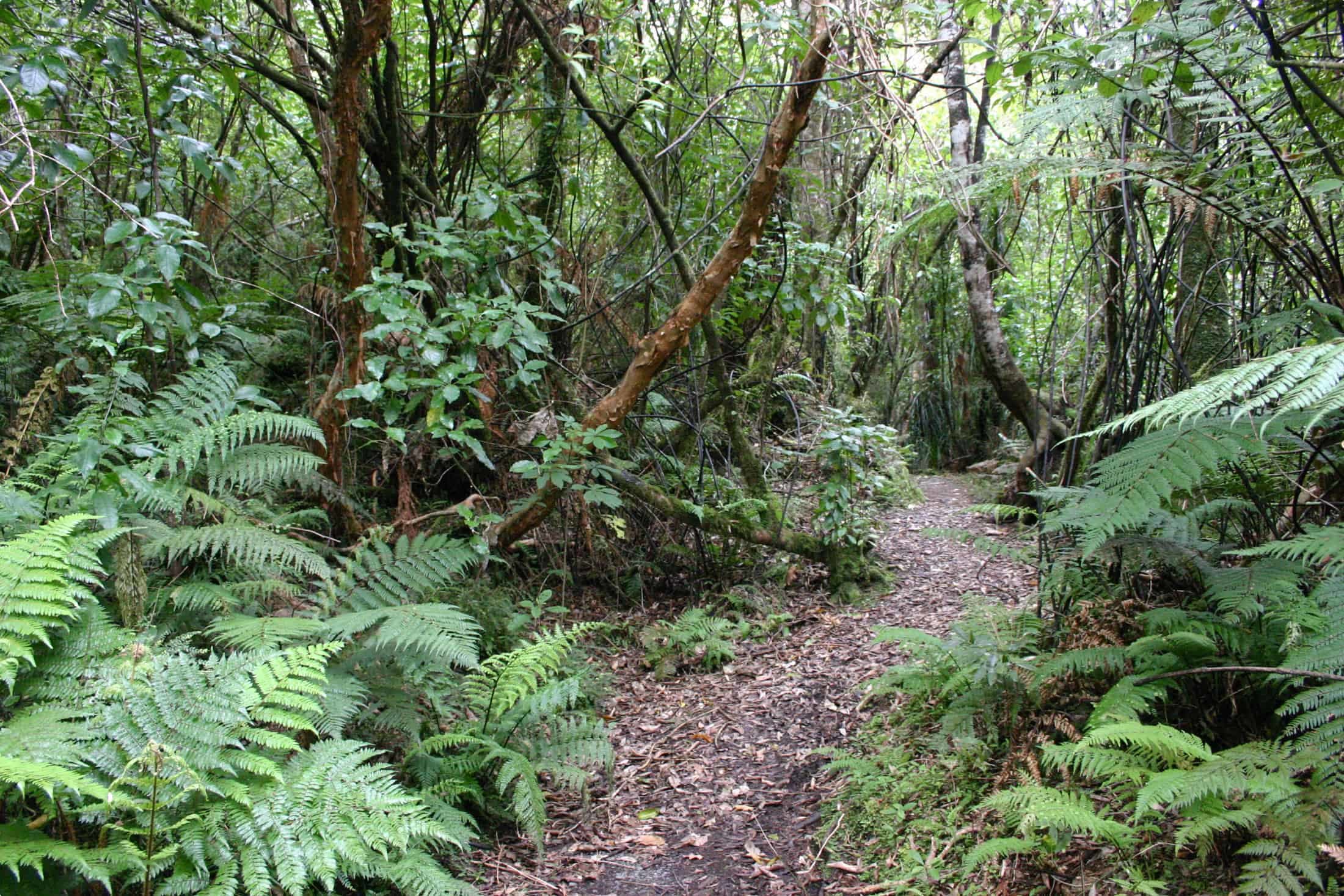
Odyssey Traveller visits Stewart Island as part of our walking tour of New Zealand. Beginning in Auckland, the tour first heads north to the golden beaches and historic sites of the Bay of Islands. We then head south to the Turangi Forest, stopping for a night’s accommodation in Auckland on the way. We then head to Tongariro National Park, where we take on the greatest adventure of this walking holiday: the full day, Tongariro Crossing walk through dramatic volcanic landscapes.
After our hike, we head to Rotorua, in order to fly to Queenstown on the South Island. From Queenstown we head to Wanaka, where we enjoy a scenic flight with views of Aoraki (Mount Cook) and the Southern Alps. The tour then heads to Te Anau, the ‘Gateway to Fjordland’, where we walk part of the famous Milford Track, linking Lake Te Anau with Milford Sound.
The following day, we catch the ferry to remote Stewart Island, to the south of the South Island. New Zealand‘s ‘third island‘ is a natural wilderness barely touched by the modern world. Here, we have the opportunity to see the iconic kiwi on a guided walk. Returning to the South Island, we stay in Queenstown, where we enjoy a short walk in Invercargill, and a trip to the charming Gold Rush village of Arrowtown, before our walking holiday of this beautiful country concludes.
Odyssey Traveller has specialised in bringing Australian travellers to the world since 1983. In recent months, with the current coronavirus outbreak, we are reorienting towards tours of Australia and New Zealand. Australia and New Zealand– along with other small countries including South Korea, Singapore, and Taiwan – have been successful in containing the number of coronavirus cases through a strong system of testing, tracing, and quarantine, and are starting to lift strict lockdown measures. We anticipate that with further lifting of coronavirus restrictions we will be able to travel by domestic flight later this year, and indications are – given talks between the Australian government/Prime Minister Scott Morrison and Prime Minister Jacinda Ardern/the New Zealand government– that there may be opportunities for trans-Tasman travel. While the coronavirus pandemic might mean that your cruise ship holiday or trip to the United States will have to be cancelled, there’s no reason to give up on your travel dreams entirely, especially when Australia and New Zealand have so much to offer.
Every Odyssey Traveller guided tour is designed for mature and senior travellers, who seek an authentic experience of their destinations. While our tours take you to the major tourist attractions – Wellington, Christchurch, Franz Josef Glacier and Milford Sound – we also pride ourselves on getting off the beaten track, taking you to lesser known sites. Our guided walking tour is led by an experienced tour guide, and is joined by local New Zealander guides. The tour price includes accommodation, entrance fees for attractions, and several meals, including breakfasts, lunch, and dinners.
For more information on our New Zealand walking tour, click here. Hiking fans may also be interested in our numerous walking tours.

Articles about New Zealand published by Odyssey Traveller:
- Questions about New Zealand
- Foundations for democracy in New Zealand: 900s – 1945
- Preparing for a walking holiday
For all the articles Odyssey Traveller has published for mature aged and senior travellers, click through on this link.
External articles to assist you on your visit to New Zealand:
Related Tours
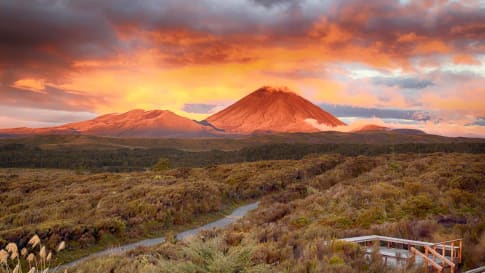
14 days
Mar, Sep, NovSmall group walking tour of New Zealand
Visiting
Escorted 14 day small group walking tour of New Zealand. Off the beaten track, for hiking fit like minded people curious about history, culture wine and landscapes.
From A$13,995 AUD
View Tour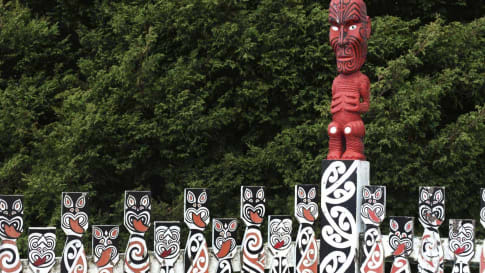
17 days
Oct, Feb, Apr, Sep, MarNew Zealand: An Odyssey Down Under
Visiting
A guided small group tour of both the North island and the South island. Your travel itinerary includes Auckland, Rotorua, Milford Sound, Queenstown and Christchurch. Maori culture also forms part of the journey to provide a memorable New Zealand tour experience.
From A$12,595 AUD
View Tour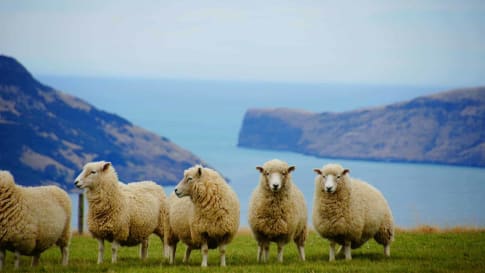
14 days
Aug, Sep, Oct, Nov, Feb +1Small group tour of New Zealand's North Island
Visiting
Escorted 13 day small group tour of the East coast of New Zealand’s North island. Off the beaten track, for like minded people curious about history, culture, wine and landscapes. Your tour director and local guides share their knowledge with you the traveller on this New Zealand tour for senior travellers.
From A$11,495 AUD
View TourArticles

Questions About New Zealand
Enjoy one of our small group tours of New Zealand for mature and senior travellers with your partner or as a solo traveller. Explore Rotorua, visit Hawke's bay and learn about wine, or Wellington or take a walk in the Fiordland National park.

Te Anau, New Zealand
Te Anau is a small town on the South Island of New Zealand, often labelled as the gateway to the wilderness and amazing scenery of Fiordland.

Tongariro National Park, New Zealand
Explore on a small group walking tour of New Zealand for active mature or senior travellers the Tongariro crossing. Suitable for couples or solo travellers who enjoy hiking/walking tours.
